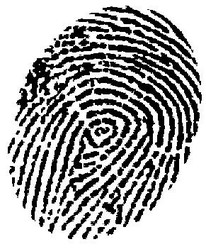
Identity Theft Protection
by WebWriter
Don't be one of the ten million people that will have their identities stolen this year. Read these tips on how to protect yourself.
Identity Theft Statistics
Identity theft is on the rise. It has become one of the fastest growing crimes in United States. With over 25,000 identities stolen every day, and over ten million stolen each year, It's more important then ever to protect yourself from identity theft. One of the best ways to protect yourself from identity theft is protect your personal information. There are things you can do to protect your personal information that will cost money, like purchasing a shredder or using a creidt monitoring service. However, there are also simple things you can do to protect your identity that won't cost you any money, such as using different passwords, checking your credit report every year, safe guarding your wallet and social security number, and checking your bank statements.
Credit Card VS Debit Card
Protect Yourself From Credit Card Identity Theft
It's safer to use a credit card instead of a debit card. By fraud statue you essentially have no liability if someone makes illegal charges on your credit card. You don't have the same protection when it comes to your debit card.
Many merchants will ask you for your ID when you use your Visa or MasterCard. However, Visa and MasterCard prohibit merchants from requiring customer ID as a condition for accepting their credit cards. All you need is a signed card. The merchant should compare your signature on the back of your card with your signature on the receipt. No ID is required. If a merchant insists that you show them your ID, cover up your address so that only your name is showing, and then report them to the card issuer.
In certain states, like California, the Supreme Court ruled that merchants cannot collect zip codes or phone numbers from credit card customers. So if a store asks you for yours, you do not need to give it to them.
Shred Everything
One of the ways you can protect yourself from identity theft is to shred your mail instead of throwing it away. Tearing your mail up will not protect you as much as shredding it will. Identity thieves will go throw mail and piece back the mail like you would a puzzle. Shredding your mail will give you maximum protection. Even the mailing label on a store catalog can be used to steal your identity, so shred those too. Use a shredder that will turn paper into actual confetti. Shredders vary in price but you can get one for as little as $30.
Shredders From Amazon
 |  |  |
| Aurora AS890C 8-Sheet Cross-Cut Paper... Aurora Only $40.5 | Royal Machines 112MX 12-Sheet Cross C... Royal | Aurora 31215 12-Sheet Medium-Duty Cro... Aurora Only $82.67 |
Passwords
Internet Identity Theft
Do not use the same password for everything. Use different passwords for online transactions and banking. Basically, don't use your online banking passwords at other web sites. You should also change your passwords at least once a year. Don't use your birth date for a password, and don't reuse your old passwords.
Use An Identity Theft Protection Stamp
Protect your personal information with an identity theft guard stamp. The stamp uses a unique pattern that masks your information on papers. This is great for stamping out your personal information on pre-approved credit card offers, magazine and catalog labels, and other private and confidential papers.
Identity Theft Protection Stamps From Amazon
 |  |  |
| Miseyo Wide Identity Theft Protection... Miseyo Only $12.63 | Vantamo Identity Theft Protection Rol... Only $7.59 | Nezyo 2 Pack Identity Protection Roll... Nezyo Only $9.99 |
5 More Ways to Protect Yourself From Identity Theft
- Consider using a credit monitoring service. There are many different credit monitoringservices but the best one is a service that monitors all three credit bureaus 24 hours a day, 7 days a week, and one that will notify you in real time.
- Retrieve your mail from the mailbox promptly.
- Don't carry your Social Security Card with you. Store it in a safe place, and be careful of who you give it out to.
- Use extreme caution when giving out your personal information over the phone and internet.
- Always check you bank statements for unauthorized charges and withdrawls.
What To Do If You Become a Victim of Identity Theft
- Place a fraud alert on your credit reports. An initial fraud alert stays on your credit report for at least 90 days.An extended fraud alert stays on your credit reportfor seven years.
- Close the accounts that have been opened or tampered with.
- File a complaint with the Federal Trade Commission.
- File a report with your local police department. Bring a copy of the complaint you filed with the Federal Trade Commission.
Identity Theft Protector
 |
| Broderbund Identity Theft Protector Broderbund Only $11.94 |
Have you ever had your identity stolen?
Order A Free Credit Report
By law, (in the United States) you are allowed one free credit report every 12 months from each of the 3 national credit reporting agencies. Order your credit report at least once a year. Check it thoroughly.
National Credit Reporting Agencies:
- Experian: Toll-free: 1-888-397-3742
- Equifax: Toll-free: 1-800-685-1111
- Transunion: Toll-free: 1-800-916-8800
You might also like
Myths Uncovered about Southern StereotypesHollywood, politics, the media, and others choose to paint Southerners as dum...
Newly Single, Now What?Newly single and struggling? Things you can do to ease the transition from be...



 Pool Safetyon 06/18/2011
Pool Safetyon 06/18/2011
 Symptoms of Stresson 06/17/2011
Symptoms of Stresson 06/17/2011
 Livescribe Echo Smartpenon 06/14/2011
Livescribe Echo Smartpenon 06/14/2011
 Homemade Octo Mom Costumeson 06/14/2011
Homemade Octo Mom Costumeson 06/14/2011


Comments
Thank you Webwriter. I can't say I'm the victim of identity theft but something decidedly dodgy is going on as someone has done a lot of insurance checks in my name and these are all showing up on my credit record. i am having the devil's own job to get it sorted!
Some common sense advice here we all need to be reminded of once in a while to protect ourselves from identity theft!